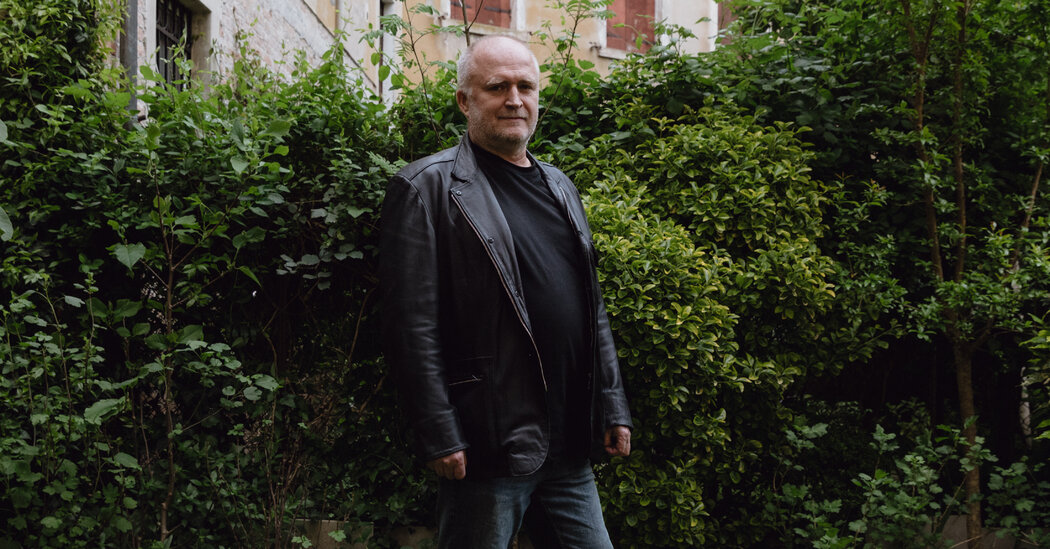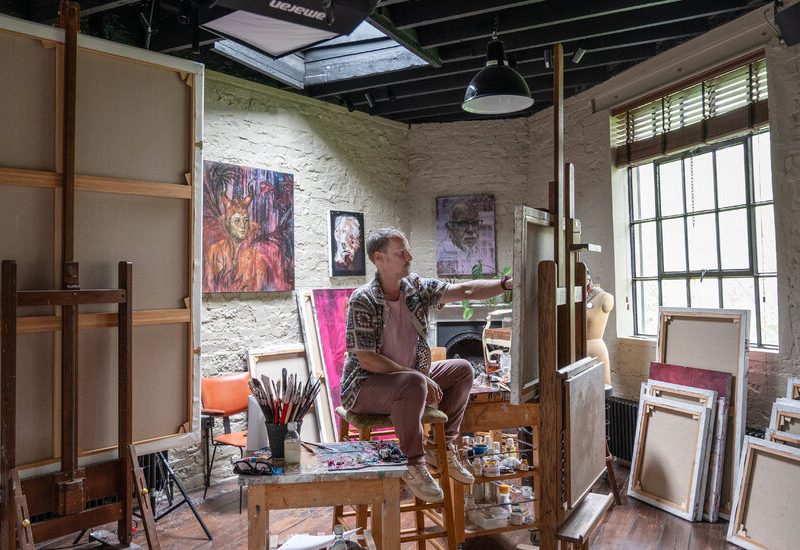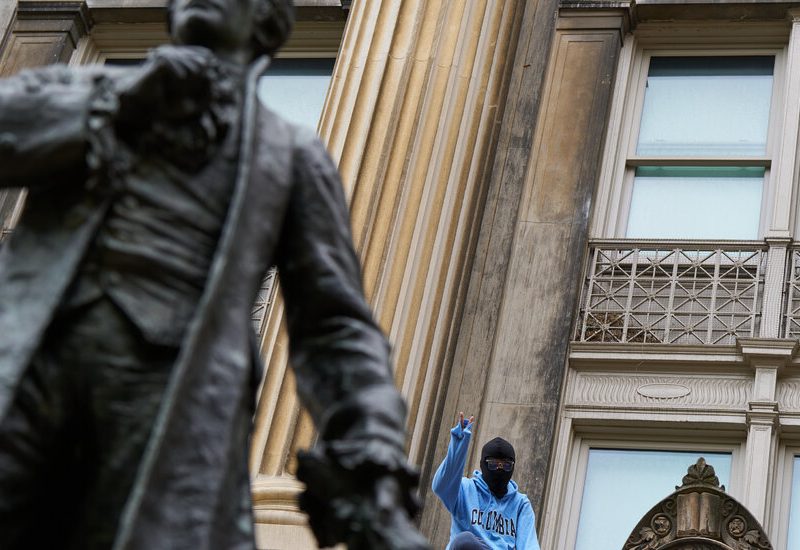Six months ago, Ignacy Czwartos won the opportunity of a lifetime.
A politically conservative painter whose work contains religious, historical and military images, Czwartos was an outsider in the contemporary art scene in Poland. But that didn’t stop the government there, at the time led by the populist Law and Justice Party, from choosing him to represent the country at the Venice Biennale.
“Of course, I was happy,” Czwartos, 57, recalled recently.
But just weeks after he got the news, Czwartos’s opportunity vanished.
After liberal, centrist and moderately conservative political parties formed a new government in Poland, they quickly dropped Czwartos as the country’s Venice representative. Instead, the new culture minister announced that he would send Open Group, a Ukrainian collective, to the Biennale instead.
Czwartos was furious. The decision, made with little explanation, “was an act of political censorship,” Czwartos said, adding that the Polish government had acted like a totalitarian state.
So Czwartos made his own decision: He would to go to Venice anyway, the government be damned.
On Wednesday night, in a quiet housing complex close to the gardens where much of the Biennale takes place, Czwartos opened his show. Titled “Polonia Uncensored,” and running through May 17, the exhibition features 15 large paintings including a series of artworks depicting Nazis who committed atrocities in Poland during World War II, and another set showing Polish soldiers who fought the Soviet Union.
Czwartos said those works arose from his interest in Polish history. “Art is free,” he said. “You can take whatever subject you want.”
At a time when inclusion is a preoccupation in much of the art world, with exhibitions often highlighting works by ethnic and sexual minorities, Czwartos and his supporters see this episode as evidence that museums and galleries remain closed to one group, at least: political conservatives.
Piotr Bernatowicz, the curator of Czwartos’s show and the director of a major Warsaw art museum, said in an interview that left-wing views dominated the art world. “We’re the rebellion,” he said.
Yet to most Polish artists and curators, who are predominantly liberal, Czwartos’s case shows Poland shaking off the legacy of the previous government, which meddled in the art world to enforce its traditional views of society.
Marta Czyz, the curator of the replacement Biennale show, said that Czwartos was “a fascist painter,” adding: “I don’t think he should be shown anywhere.” Contemporary art was not about looking to the past, she added, and Czwartos’s paintings would find few fans in Venice.
At the opening of Czwartos’s show on Wednesday, there seemed to be little demand. Aside a handful of reporters, there were only a dozen or so of Czwartos’s friends and supporters.
Visitors paid attention to one painting in particular. “Nord Stream 2” depicts Angela Merkel, Germany’s former chancellor, alongside President Vladimir V. Putin of Russia. They are separated by a metal pipe that evokes the gas pipeline linking their two countries, and appears to form the shape of a swastika. Czwartos said that the painting was “a warning” about those countries’ close ties.
Czwartos’s ouster is not the first example of political intervention in Poland’s art world, which has been in turmoil since 2015. That year, the Law and Justice Party came to power and began a yearslong effort to shift the country’s culture to the right, including by ousting liberal directors from major art museums and replacing them with conservatives who would promote traditional values.
Among the museums affected was the Zacheta National Gallery of Art, in Warsaw, which convened the jury that chose Czwartos to represent Poland at Venice.
One juror, the curator Joanna Warsza, said that the selection process was “a setup” designed to chose a “far-right” artist, and that Czwartos was the only option available. When it became clear he would be selected, Warsza and two other jurors issued a dissenting statement in which she said that Czwartos’s art didn’t “in any way reflect Poland’s contemporary art scene.”
His paintings presented Poland as “a homogenous, unopen country focused only on itself and on speaking from the position of a victim,” the statement added.
Warsza said she was overjoyed that Poland’s new government had replaced Czwartos with Open Group, the Ukrainian collective — although she said it allowed Czwartos to portray himself as a “victim and hero.”
“This is exactly what he wants,” Warsza added.
While the tiny turnout for Czwartos’s opening suggested little appetite for his work, the Open Group’s exhibition at the Polish pavilion was packed. Titled “Repeat After Me II,” the show consists of two large videos featuring Ukrainians who fled after Russia’s full-scale invasion, reproducing the sounds they remember from the war. They imitate the sounds of bombs exploding, automatic gunfire and helicopters whirring overhead, then give an instruction to viewers: “Repeat after me.” Microphones stand on both sides of the pavilion, and visitors are also encouraged to imitate the noises.
At the official opening on Thursday, several hundred people assembled outside Poland’s grand pavilion to hear speeches, including from Poland’s culture minister, then lined up to go inside. Czwartos was nowhere to be seen.



